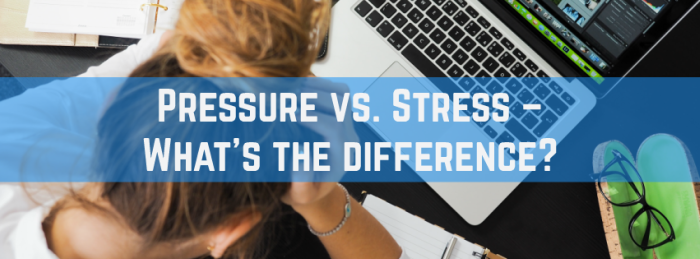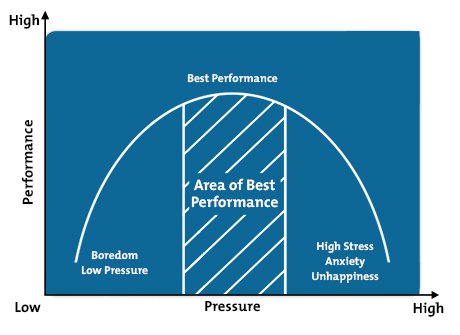Pressure vs. Stress
|
|
|
|
Author: Lauren Mawson, HR Business Partner Date: 3rd November 2020 In this blog we will take a look at how pressure can affect stress and vice versa. We will also look at how the two are different and some key ways to help manage stress during these continually unusual and difficult times. Pressure and stress are often confused as the same thing and whilst there is a link, there is an important distinction between the two. We all experience pressure at points in our lives that require us to make quick decisions when faced with uncertainty or risk; up to a certain point, this pressure is healthy and even essential as it can increase motivation, which can in turn improve performance. However, the risk with excessive or extended pressure is that this can be detrimental to our health and wellbeing and could be a cause of work-related stress. The Health and Safety Executive (HSE) defines work-related stress as “The adverse reaction people have to excessive pressures or other types of demand placed on them at work”. It’s important to remember that people react to pressure differently and the point at which this can start to cause stress will likely differ too; however in the 2019 Health and well-being survey conducted by the CIPD, they identified some of the main causes of work-related stress as:
The Performance/Pressure CurveThere is no set ‘trigger point’ for when pressure gives way to stress; this will differ for each individual. However, the performance/pressure curve helps to illustrate in what conditions feelings of stress and anxiety can be caused and how this links with performance.
For example: Low pressure = employees can feel bored as they are not being challenged = low performance levels High pressure = employees can feel the challenges facing them are too difficult and unmanageable = low performance levels The key is to strike the balance between the two where enough pressure is applied to instigate high performance levels, with employees feeling motivated to work to the best of their ability and achieve job satisfaction. Managing StressThe NHS recommends 10 stress busters which start with identifying the cause. This helps to deal with the stressor in a more healthy way, rather than turning to unhealthy habits such as smoking or drinking.
Source: https://www.nhs.uk/conditions/stress-anxiety-depression/reduce-stress/ How PACT HR can help?
For more information on how to receive support from a PACT HR Business Partner, contact the PACT HR helpdesk via phone 01274 436644, or email info@pact-hr.co.uk and we will help. |

 Source:
Source: 